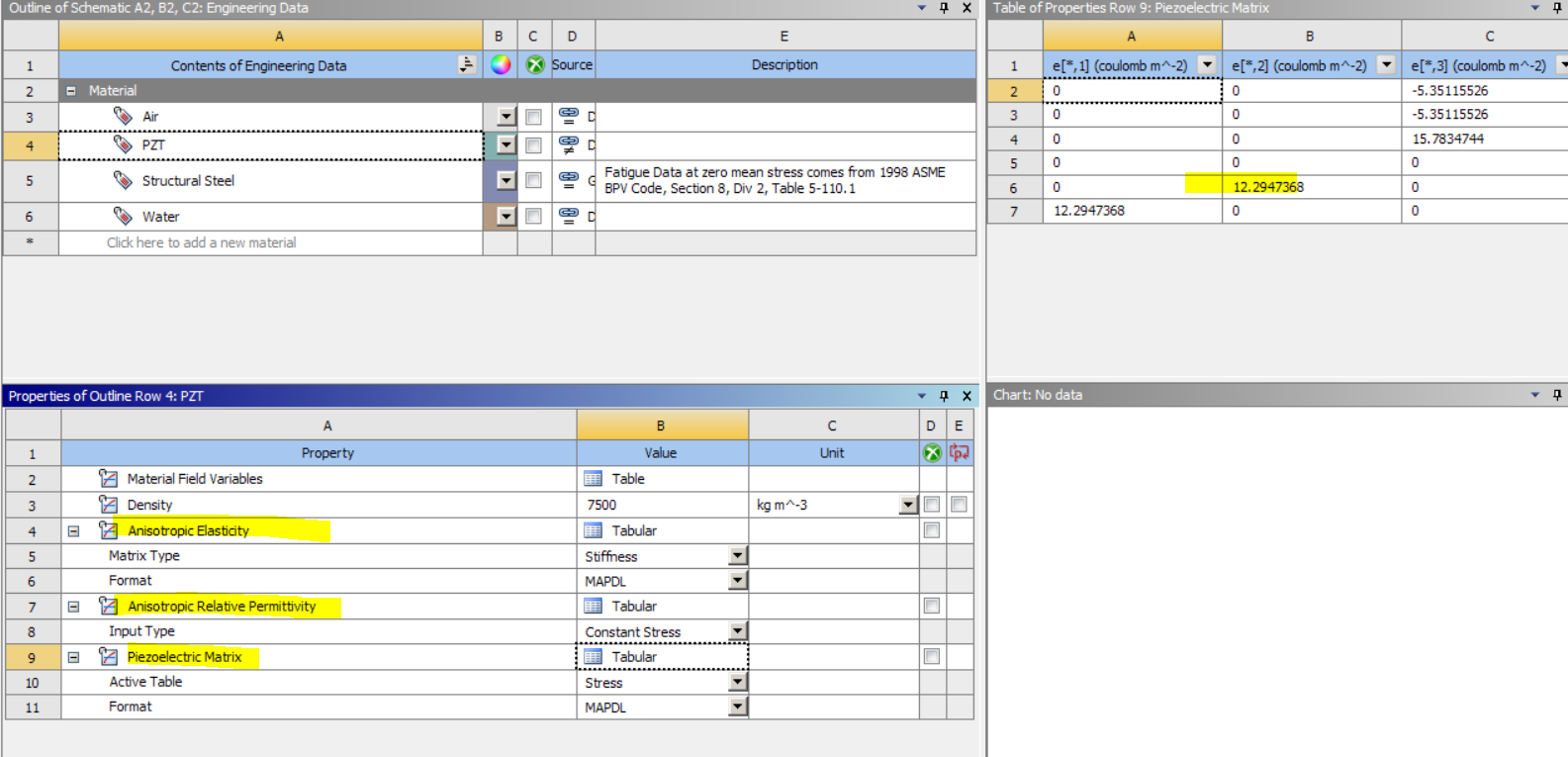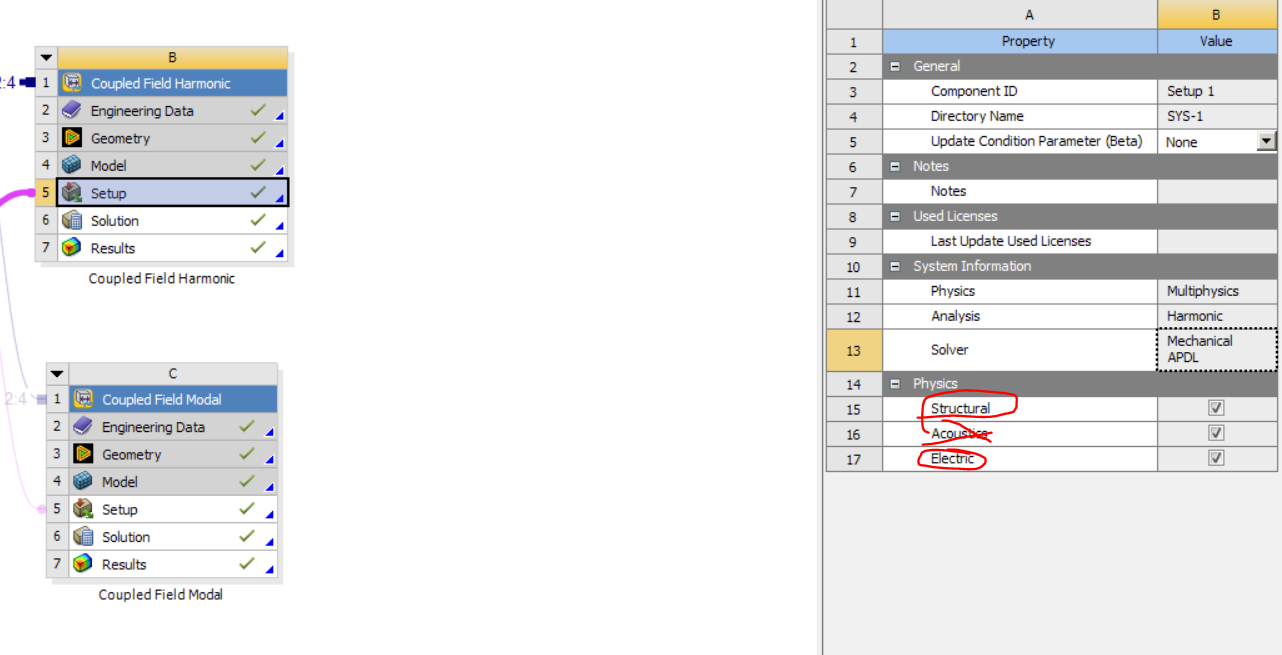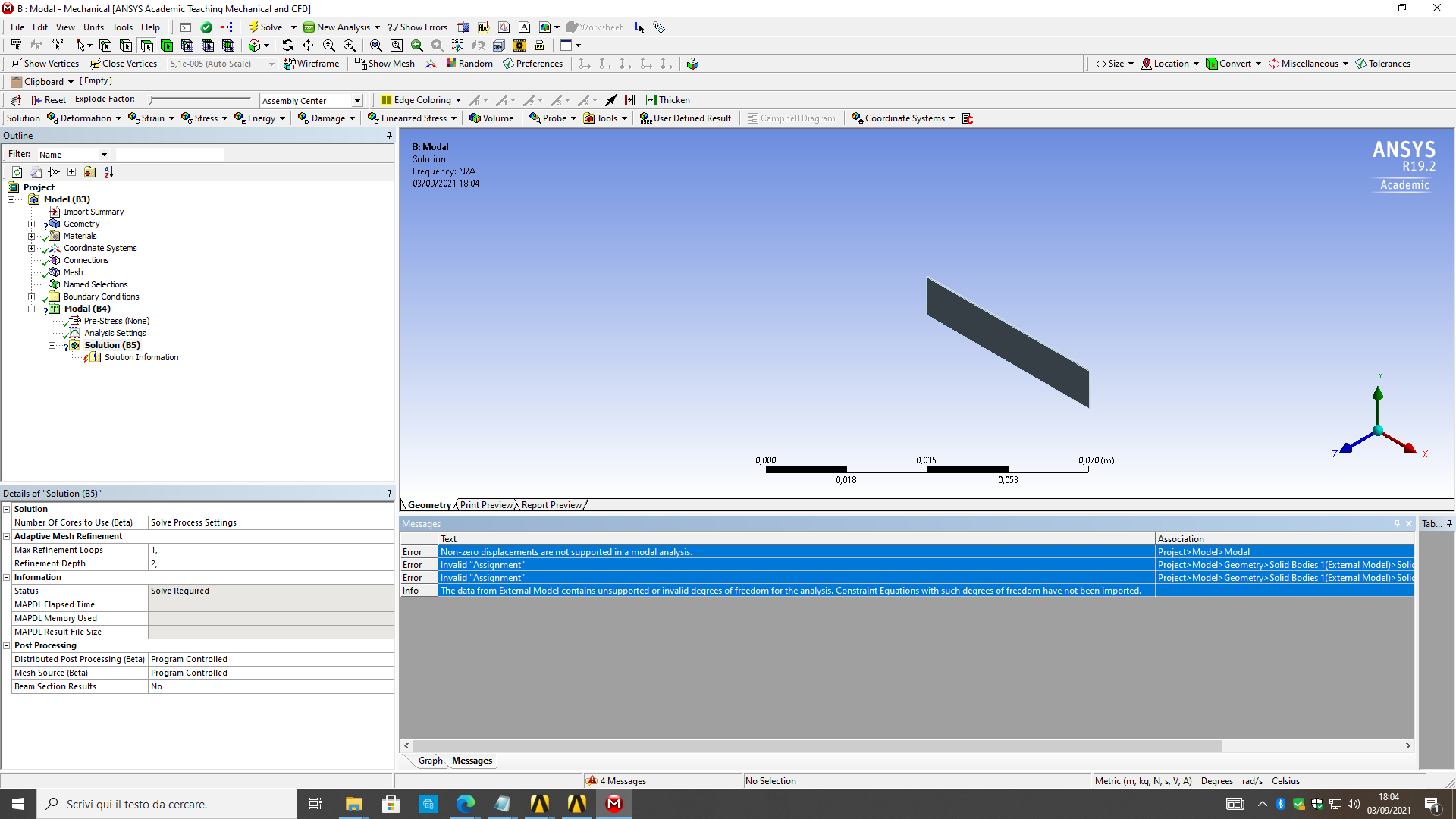-
-
September 3, 2021 at 4:05 pm
AriFurlan
SubscriberHi all!
I'm trying to do modal and harmonic analysis of a piezoelectric cantilever beam in WB.
I made the model in APDL: i defined density, anisotropic elasticity, piezoelectric matrix and piezoresistivity. the geometry of the model and i meshed it.
I imported the .cdb file in WB, using the component system "external model", but WB does not seem to be able to read the APDL matrices... Any suggestions?
I post the main stamps.
Thanks a lot to anyone who will help me :)
September 6, 2021 at 8:44 amErKo
Ansys EmployeeHello
That is not possible - please use the latest release (2021 R2) where we have native piezo+structural coupled physics modal or harmonic systems (see last image below) - this is the recommended workflow and we can now input our properties for the piezo straight into engineering data (see below) making it easy to define these properties and analyses these type of systems.
2021 R2 screenshots:


February 19, 2022 at 3:16 amShanuka
SubscriberHi I am struggling with the same question
I can't model the PZT-5H material I already tried what you have mentioned above. But can you kindly send more screenshots and any command files to model PZT material.
I would really appreciate if you can help me to model the PZT material in ANSYS.
Shanuka
Viewing 2 reply threads- The topic ‘Import PZT properties from APDL to WorkBench’ is closed to new replies.
Innovation SpaceTrending discussions- LPBF Simulation of dissimilar materials in ANSYS mechanical (Thermal Transient)
- Simulate a fan on the end of shaft
- Nonlinear load cases combinations
- Real Life Example of a non-symmetric eigenvalue problem
- How can the results of Pressures and Motions for all elements be obtained?
- Contact stiffness too big
- Test post on Forum – LLM response – SC
- 13-Node Pyramid Element Shape Function
- Element Birth and Death
- Python-Script to Export all Children of a Solution Tree
Top Contributors-
4492
-
1494
-
1376
-
1209
-
1021
Top Rated Tags© 2025 Copyright ANSYS, Inc. All rights reserved.
Ansys does not support the usage of unauthorized Ansys software. Please visit www.ansys.com to obtain an official distribution.
-
The Ansys Learning Forum is a public forum. You are prohibited from providing (i) information that is confidential to You, your employer, or any third party, (ii) Personal Data or individually identifiable health information, (iii) any information that is U.S. Government Classified, Controlled Unclassified Information, International Traffic in Arms Regulators (ITAR) or Export Administration Regulators (EAR) controlled or otherwise have been determined by the United States Government or by a foreign government to require protection against unauthorized disclosure for reasons of national security, or (iv) topics or information restricted by the People's Republic of China data protection and privacy laws.












